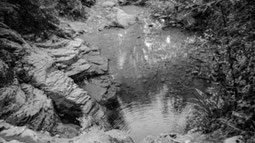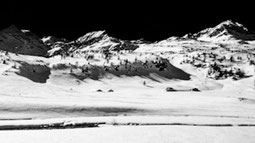
Written by Ylenia Cantello

In mountain and landscape photography, solitude takes on a profound and transformative dimension, as it represents an opportunity for introspection, connection with the natural environment and deep listening to oneself.
Solitude is an essential element for those who wish to make photography a form of personal expression, a language that goes beyond the simple visual reproduction of reality, so as to become fertile ground for an experience that is both aesthetic and spiritual, a journey in which the individual can get closer to their essence, rediscover their place in the world and embrace life and death with love and joy.
Solitude as a creative condition in landscape photography
Solitude allows us to observe, explore and interpret the world with a freedom that is not always possible in the presence of other people. When we venture into the mountains alone, in silence and quiet, our sensitivity is heightened and we have the opportunity to connect with the landscape in a deep and intimate way, truly encountering the most hidden essence of the place.
The landscape envelops every aspect of our being with a web of silently intertwining atmospheres and stories, and solitude creates a spiritual and physical space that allows us to become completely absorbed by our surroundings.
In the mountains, observation becomes more acute, our perception of the landscape becomes more sensitive, and so lights, sounds, colours and geometries appear naked, in a deeper dimension that can only be experienced when we are in complete solitude. This gives us great freedom and allows us to express ourselves without conditioning, opinions or prejudices that could distort our creative vision.
We are alone with ourselves, with the nature of the mountains and with our cameras, everything we need to refine the art of seeing and listening.
Solitude as poetry and deep listening
The solitude experienced in the mountains is linked to poetry, as both involve an act of listening. Just as poetry is a means of exploring the human soul and its relationship with the world, so solitude in the mountains becomes a form of visual poetry, in which we experience intense contemplation.
Poetry arises from a profound and intimate observation of the world that delves into the most hidden meanings of things. The same happens in landscape photography where, immersed in solitude, we become poets who use images to express sensations, scents and meanings. We find the moment and the frame to emphasise metaphors and alliterations that transcend the simple appearance of the landscape and tell the story of a whole life.
We learn to truly listen to the breath of nature, where distant sounds, subtle vibrations, the imperceptible movement of a cloud or a leaf become fundamental elements of visual narration and where, in solitude, every element of the landscape makes its voice heard. It is up to us to tune in to this voice, to understand it and translate it into an image that carries with it the energy of that encounter.
Knowing oneself in solitude
In mountain photography, solitude is a true inner journey. When we are alone, nature offers us the opportunity to feel organically connected to something greater, to understand our connection with the entire universe.
We photographers who choose solitude as our travelling companion understand that we are not just a small fragment of an infinite reality, but rather guardians of every moment in which our journey is an opportunity for growth and awareness, to become spokespersons for a message that goes beyond aesthetics and touches the most intimate chords of the human soul.
We explore nature alone, and our encounter with the mountains becomes an encounter with our essence. We feel our vital energy expand and discover our strength and vulnerability, knowing that we can embrace both with love and compassion.
Solitude to embrace life and death
Solitude in the mountains invites us, in a subtle and powerful way, to reflect on life and death. The mountains, with their eternal majesty and seasonal cycles, are a symbol of the cyclical nature of life: from birth to death, from growth to decay, everything is in constant change.
Photographing the landscape in solitude is not merely an aesthetic act but a meditation on the transience of all things, allowing us to embrace death as an integral part of life: as we observe nature changing, we see our own journey.
Mountains are subject to a constant process of transformation and everything is in a state of constant flux: peaks erode, valleys are shaped, glaciers move downhill. Thanks to solitude, we can make peace with this reality, recognise that life and death are two sides of the same coin, and welcome both with serenity and gratitude.
When we are alone among the peaks, we photograph the continuous movement of life flowing endlessly, and photography then reveals itself as an act of love towards all that exists: the rock, the sky, the trees, the meadows, the animals, life itself. Solitude, through the contemplation of nature, teaches us to fully embrace the cycle of existence with an open heart.
Solitude becomes fertile ground for creating a profoundly poetic art, capable of expressing sensations and meanings that transcend appearances, and we photographers become witnesses and custodians of the world's impermanent beauty, poets who narrate nature and life with a heart that beats in harmony with everything around us.
Solitude in landscape and mountain photography is a space rich in possibilities, an inner journey that allows us to get to know ourselves, to get in tune with nature and to embrace life and death with love and joy. Solitude becomes fertile ground for creating deeply poetic art, capable of expressing sensations and meanings that go beyond appearances, and we photographers become co-participants and guardians of the impermanent beauty of the world, poets who narrate nature and life with a heart that beats in harmony with everything around us.





